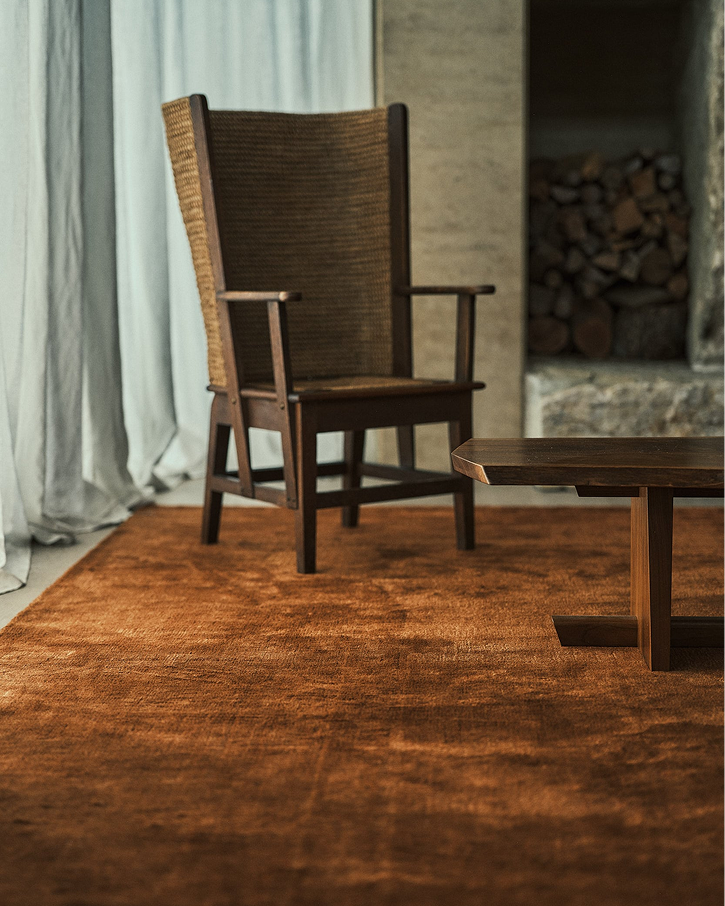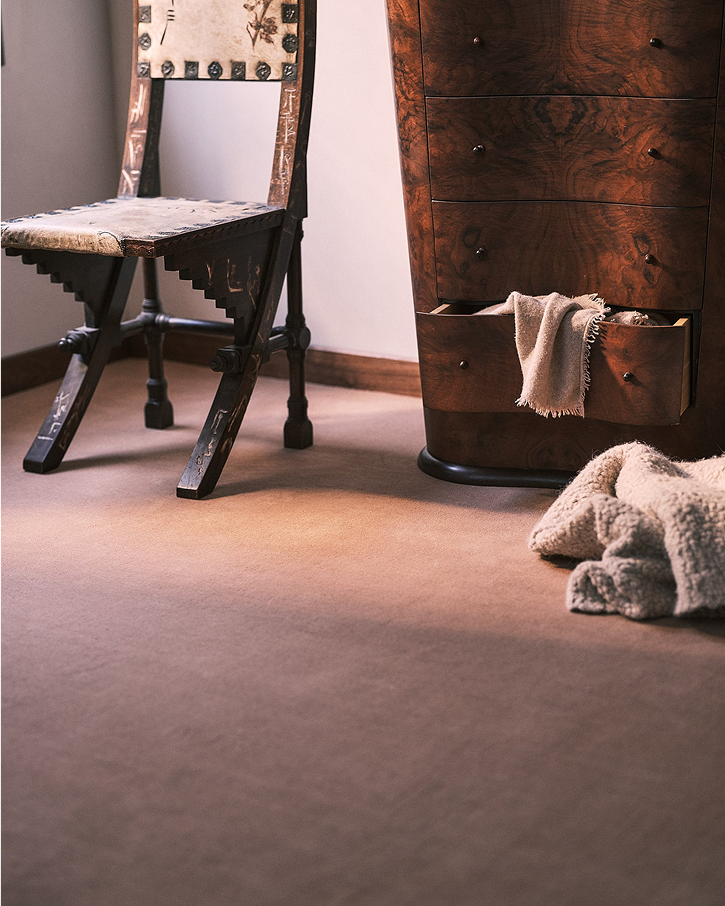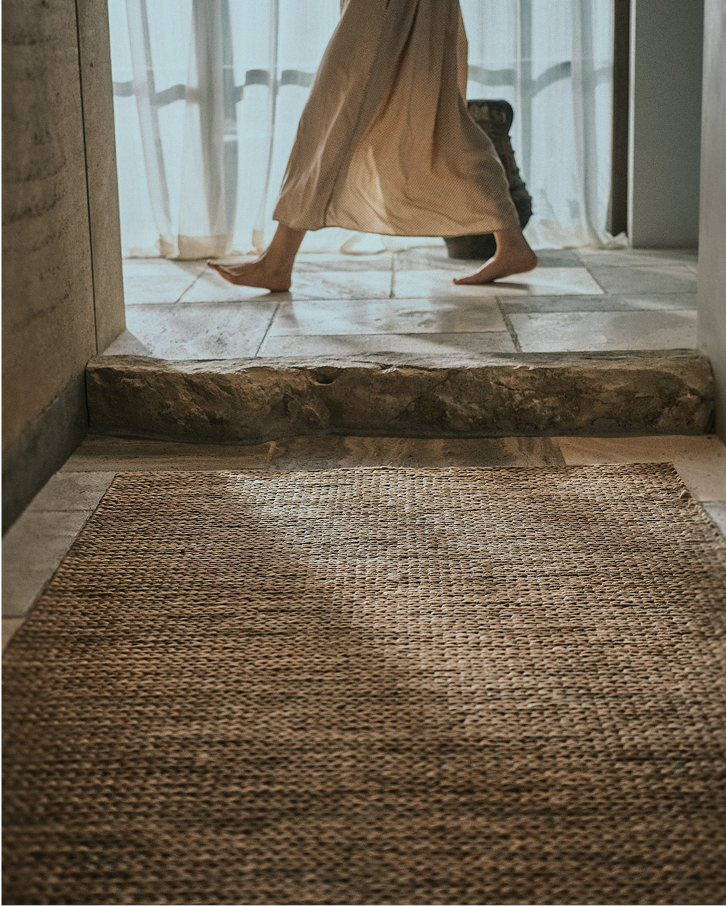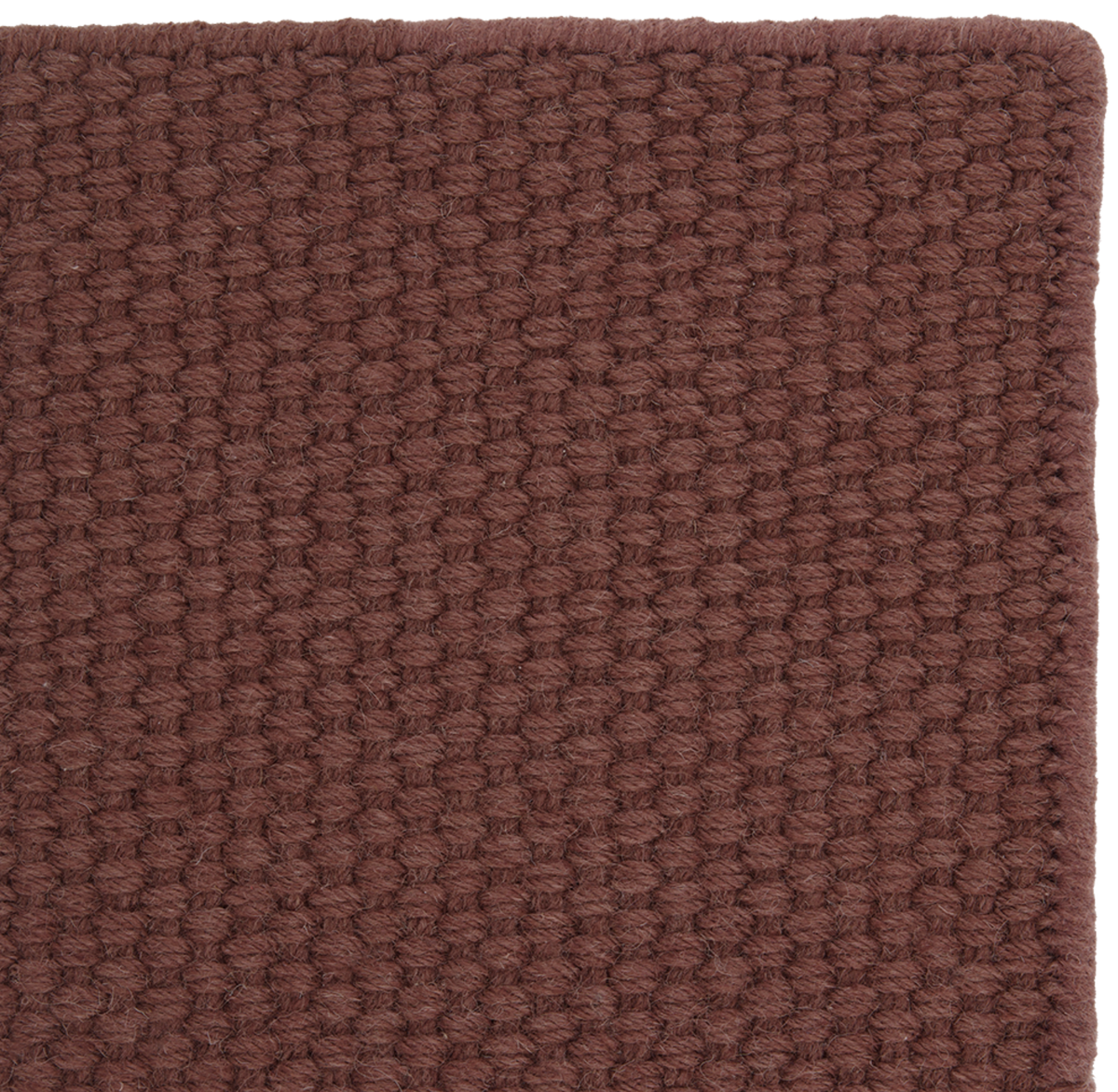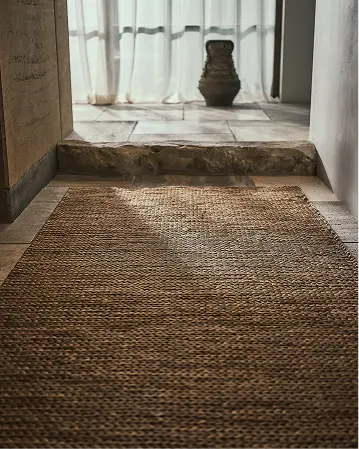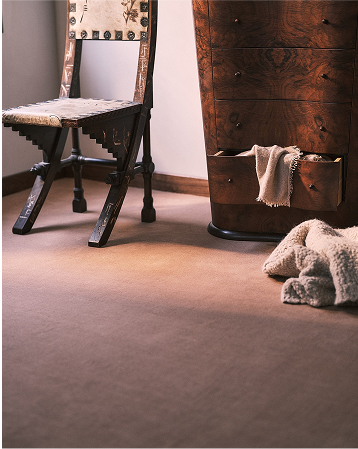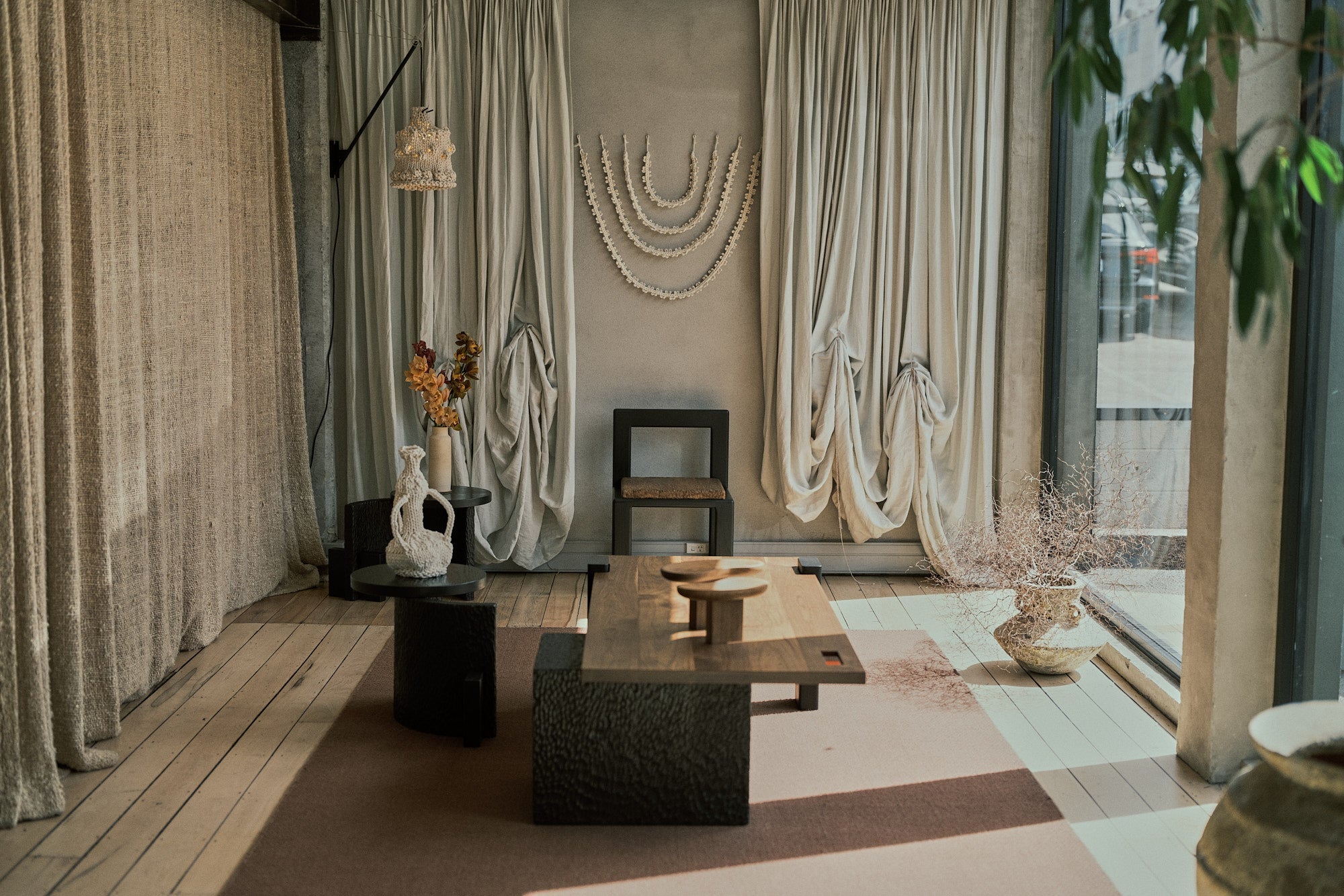
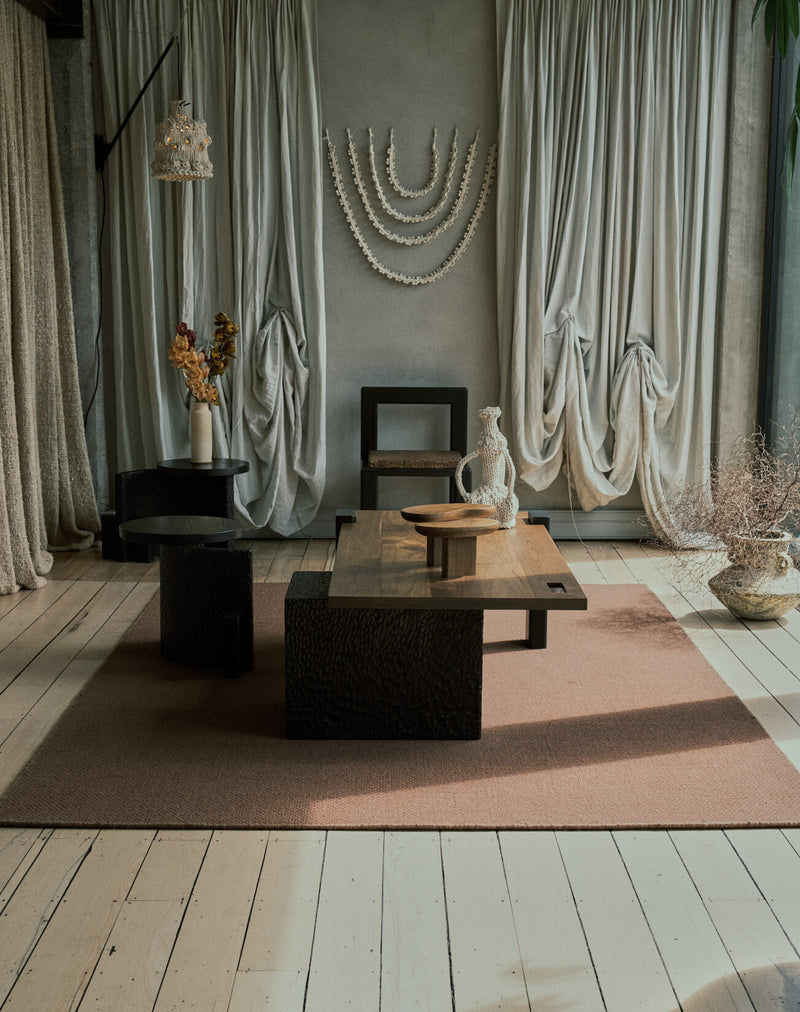
In the Showroom: Finn Ferrier & Amelia Fagence
Our Auckland showroom is a place to experience Nodi rugs and carpet firsthand, and at times, the handmade craft of other makers. For the latest installation, the Basket Weave Wool Rug in Rosewood grounds the space alongside works by sculptor–designers Finn Ferrier and Amelia Fagence. We recently sat down with them to discuss their practices and unique approach to natural materials.




Amelia, what first drew you to wood as a material?
My love of wood began in childhood, when a backyard kanuka came down in a storm. With the support of my artist parents, I experimented with crafting objects and a large sculpture, discovering what could be made from the timber after its long life as a tree. Every piece of wood is unique, with its own grains, textures and colours, and I love unlocking those natural characteristics. Timber is also wonderfully forgiving — it can be reworked, repaired and reused over decades.
And Finn, what led you to rope?
Rope has fascinated me since childhood, partly for its versatility but also because it was a precious object in my father’s shed. He had a knot for everything, and after each use the rope was carefully put back in anticipation of the next. That sense of utility intrigues me — most people see rope as a tool rather than a material. I began exploring it as I would stone, metal or wood: asking what qualities are inherent to rope, and what it can do beyond simply providing service.


Amelia, Your work often moves between sculpture and furniture. How do you decide when a piece leans more toward function, and when it becomes art?
My practice pushes the boundaries between art, sculpture, furniture and object. Most of my pieces are functional, even when they may initially appear to be crafted purely for aesthetics or form. My recent works — from coffee tables and stools to side tables, benches and lamps — all carry a sculptural approach while remaining grounded in use.
How does the grain or surface of the wood influence the final piece?
The work I create is made with my hands, so the process is all about tactility. In contrast to mass-produced objects, I want my mark as an individual maker to be evident in the pieces I create. When people touch the works and textures they experience it more thoroughly, it’s like the experience of a silk scarf on your skin, or laying on a wool carpet.




Finn, your vessels rely on tension and gravity rather than chemical bonds. How does that process influence the final form?
Gravity and tension are always at play! When I make a vessel, I work from the ground up, thinking about how the weight can support itself. With a lamp, I work from the top down, allowing the rope to relax, contort and envelop the air. One of my 'rules' is to work in a straight line without glue or chemicals to stiffen the rope. I like the idea that each piece could be undone back into a single length of rope — both material and sculpture simultaneously!
What do you hope people notice when they encounter your pieces?
When people see my rope work, I hope they notice the rope as much as the sculpture. I like working with cotton braid—it has a good tooth and is easy to handle. From my research, it seems every culture has used rope in its own way. There’s an inherent understanding of fibres; I like that rope is universally known.


For both of you, natural materials are foundational. What do they bring to a space that other materials can’t?
Amelia: Whether it’s the grain of timber or the weave of wool, they carry a richness, tactility and character that make a space feel special. They invite touch, encourage slowing down, and bring a sense of honesty. In a world of fast-moving trends and mass production, natural materials remind us of the value of craft and connect us back to nature through texture, tone and even scent.
Finn: Natural materials are wonderful. Working with them shows an understanding of their inherent qualities. All natural materials have secrets, revealed only through working with them. They are not always easy to work with and often hold natural flaws — a stamp of authenticity that should be celebrated. I also value the knowledge that, at the end of their life, these materials return to the environment.


Credits:
Photography: Campbell Hooper
Discover more of the artists' work via their websites below:
A special thank you to Yuka O'Shannessy from Public Record for helping us bring this installation to life.

